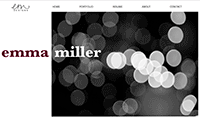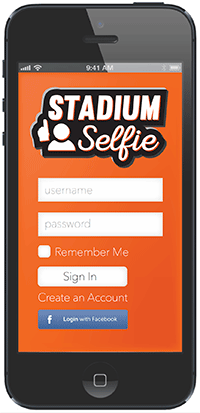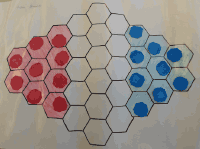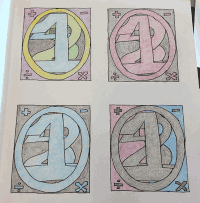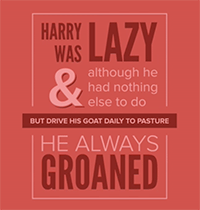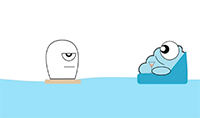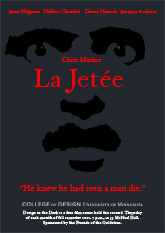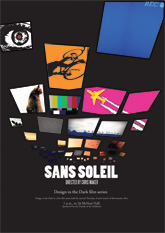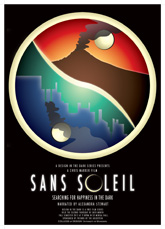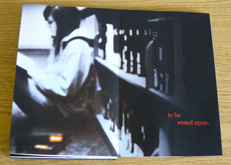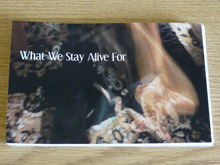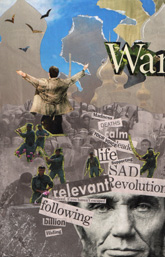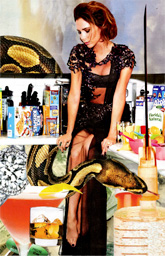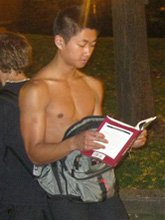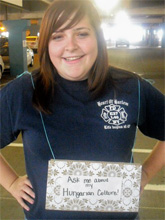Teaching Portfolio of student work
ART 275: Web Design/Interactive Media
Course Overview: This is an introductory course to web design which focuses primarily on guiding students through the web design and building process. The course provides basic skills to plan and execute a basic website, from concept to development and implementation. The course also covers web standards and practices, basic HTML and CSS, and sets the groundwork for more advanced web learning.
Personal Website Project
Project Description: The Personal Website Project is completed while simultaneously learning about a user centered web design process. Students complete research and define the project goals. They gain an understanding of the end users and develop personas to aid in design decisions. Website structure and usability are considered through site map and wire-frame construction, while prototypes are created to test the designs. Heuristic analysis are conducted to further test the effectiveness of the design. Finally, content is prepared, pictures and other media are created, and HTML and CSS are written in order to implement the website.
Web Poster Project
Project Description:The Web Poster assignment is one of a series in which students apply the HTML and CSS that they have learned about in a visual layout. They include images and tabular information. Students consider the hierarchy of the information and how they can enhance it. They will continue to focus on typography, and links but will also include images and tables.
ART/CSCI 413: Advanced Interaction Design
Course Overview: Advanced Interaction Design, is a course where students learn how to design interactive technologies that people will enjoy using. Combining processes and principles of graphic design, human factors, and human-computer interaction students learn techniques for prototyping and evaluating interfaces, how to conduct fieldwork, how to get feedback from project stakeholders, and how to conduct controlled online experiments. Web designs and mobile apps are used as examples in support of a broad understanding of interaction design and digital media so that students can combine computer graphics skills with the knowledge of principles and processes in creating excellent interactions in any technology.
Conceptual Redesign Project
Project Description: Students focus on the conceptual redesign of an existing micro-site (5–7 discrete web pages). To lay the appropriate groundwork, this project takes students through the main steps in the first half of the interaction design process, including: Research and project brief, persona development, heuristic analysis, site map and wire-frames, and prototyping
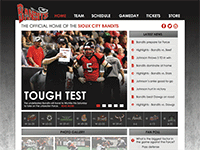
PDF file. View as single full page.
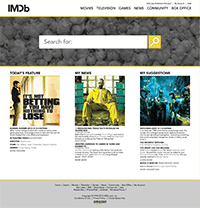
PDF file. View as single full page.
Personal Goals Project
Project Description: Students focus on the conceptual redesign of an existing micro-site (5–7 discrete web pages). To lay the appropriate groundwork, this project takes students through the main steps in the first half of the interaction design process, including: Research and project brief, persona development, heuristic analysis, site map and wire-frames, and prototyping
ART/CSCI 314: Game Design
Course Overview: Video games are the newest and most exciting form of interactive storytelling and entertainment, giving players the ability to directly affect the outcome of these stories. The most successful games create an experience that keeps players engaged and coming back for more. In ART/CSCI 314: Game Design, students will look at current and past game titles to learn about the fundamental methods of game design and development along with the history, theory, non-linear storytelling, and a creative-problem solving process geared toward game design. Students will ultimately propose their own game and refine it based upon feedback.
Game Design Final Project
Project Description: The Final Game Design Project allows students to demonstrate the principles and techniques of game design that they have learned throughout the semester. Students consider a wide variety of perspectives while completing a process of; determining a theme, identifying mechanics and balance of the game, identifying the conflict between players, creating prototypes of the game and play testing these to help with design decisions. Students tweak their ideas and ultimately create a well considered prototype of the final game.
ART/CSCI 347: Animation 1
Course Overview: Digital Animation 1, is a studio course where you will learn how to create animated sequences that tell compelling stories. A process of design will be employed to develop creative concepts for implementation. Students will incorporate their own artistic approach as well as their knowledge and skills from previous art/design courses, including principles and elements of design, to creating their digital animation. Students will keep or record all work, including exercises, sketches and plans, and assigned projects.
Kinetic Type
Project Description: Create a 20+ second animation of moving type. Must make use of principles of design to create an interesting layout and clever movement to communicate the essence of your Grimm character/story. Use your mood board and concept map to determine the essence of your character and to develop clever movement related to your character. Design and storyboard your animation. Build it in After Effects using the techniques we've learned in class so far.
Motion Graphic Story
Project Description: Students develop and implement an animated story, through a self-defined project. The project will address your personal goals (e.g., learning an animation or illustration technique, improving the scope and range of your portfolio, expanding upon a previous project), and require a high level of design rigor. You will meet and discuss your goals individually with the instructor throughout the project.
GDES 1315; Foundations: The Graphic Studio
Through a series of assignments of increasing complexity students explore the text & image relationship as it exists within popular culture and news media. Additionally they test their ability to manipulate and re-author meaning using technology as well as straight-forward methods. Through hands-on processes the student analyzes a variety of messages, deconstructing them to begin a process of re-assemblage to create enhanced truths. By combining text and image with elements of time, sequence, materiality and context the student directly experiences communication in this infinitely malleable form. Assessment occurs using a variety of methods including both small and large group critique, peer review, formal presentations of research, individual meetings and detailed written instructor evaluation.
The Poster
Project Description: In this assignment students design a poster for one of two films made by French film maker, Chris Marker. Instead of a planning for a prolonged contact with your audience, students now have to plan for making an immediate impression on the viewer and then draw them to the poster in order to take in the full details of their message. And then its over; the viewer is off to do other things, looking at other posters, catching an elevator, going to class, etc.
The Book
Project Description: In this assignment students design a poster for one of two films made by French film maker, Chris Marker. Instead of a planning for a prolonged contact with your audience, students now have to plan for making an immediate impression on the viewer and then draw them to the poster in order to take in the full details of their message. And then its over; the viewer is off to do other things, looking at other posters, catching an elevator, going to class, etc.
Collage
Project Description: Students create one image to accompany the text of a previous assignment. They must consider how they are going to approach this. Will they “caption” the text creating or finding an image that is actually described within the text? Will they “editorialize” the text by trying to evoke the overall feel or mood of it? Is the image going to “speak” the text or the text “speak” the image? Or, will they “elucidate” or educate the audience with the image?
DES 1111; Creative Problem Solving
This course will help students understand the role of creativity and innovation in their work and in other disciplines. It will challenge them to move outside of their existing comfort zone and recognize the value of that exploration. This course will help the student understand the importance of diverse ideas, and to convey that understanding to others. The principal learning activity in the course is a series of “differents” where students are challenged to identify and change their own cultural, habitual, and normal patterns of behavior. Beginning with a prompt, e.g. “eat something different” learners recognize their limits and overcome them. In addition, they are encouraged to understand that creativity is based on societal norms, and that by it’s nature, it will differ from and be discouraged by society; in this course, the persistence of the creative person is developed through practice. At the same time, these exercises are constrained by concerns of safety, legality, and economics, which are addressed in their creative process.
Differents
Project Description: The principal activity of the course is the completion of a series of “differents.” They are graded on a five point scale; creativity, writing, completion, being planned and executed. The best of the class will be awarded an extra point. Students will need to write up a description of their “different” each time and post it to Moodle, a course management system for the University. The students will also need to post at least one digital picture of themselves engaged in each DSD and attach these to their web posting.

